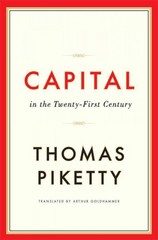Answer the questions below .thanks
Example 19.111. A. pension fund provides the following benets for widows of male members: (a) on death of the member in service, a widow's pension of annual amount equal to onethird of the member's salary rate at the time of his death: and {b} on death of the member after age or illhealth retirement, a widow's pension of th of the member's average salary in the 3 years inunediately preceding retirement for each year of service, 'actions of a year counting pro rata. Develop formulae ior valuing the widow's benets for a male member aged I with n years1 past service (including fractions). You may assume that all ageretirements take place at exact age , between ages and 55, or at exact age 65, and that illhealth retirements may take place at any age between 35 and EH}. Widows' pensions on death after retirement are payable to any widow (not just to a widow who was married to the member when he retired.) Widows' pensions are payable monthly in advance and do not cease on remarriage. You may assume that a service table has already been constructed, and that the member's current salary rate per annum is SAL. Commutation functions ........-1 nd- 1-... Annn'lnnnJ 1 Contributions to a pension scheme by employees are made at a rate of 5% of salary when aged under 35, 6% between ages 35 and 45, and 75% when aged 45 or over. Calculate the present value of the future contributions payable by a member aged exactly 30 who in the past year has received a total salary of f12,718. A company pension scheme provides the following benefits for all members: (1) a pension on retirement (on grounds of ill-health or of age) of one-eightieth of final pen- sionable salary for each year of service (including fractions), (2) a lump sum on retirement of 3 times the annual pension, (3) on death in service, a lump sum of f30,000, (4) on withdrawal from service, a return of the employee's contributions, accumulated at 3% per annum compound. Final pensionable salary is defined as the average annual salary in the three years immediately before retirement. All members who reach age 65 retire immediately. Employees contribute to the scheme at the rate of 3% of salary, payable continuously. Salaries are revised continuously. The employer's contribution rate is assessed for each member sep- arately, and is such that the prospective reserve for each new entrant is zero. Expenses are ignored. (i) (a) Derive a formula, in terms of suitable commutation functions, for valuing benefit (1) above in respect of a new entrant aged a with annual salary rate SAL. (You need not define the service table functions.) (b) In respect of a new entrant aged a with annual salary rate SAL, give formulae for valuing benefits (2), (3) and (4) above, using suitable commutation functions. (You need not derive the formulae.) (c) Hence find a formula for the employer's contribution rate for a new member aged a and a starting salary rate of f10,000 p.a. (ii) (a) Using the basis given in the pension fund section of the Formulae and Tables (and the supplement), find the value of each of the benefits (1), (2), (3) and (4) for a new entrant aged 45 with salary rate f10,000 per annum. (b) Hence or otherwise find the employer's contribution rate for this new member








